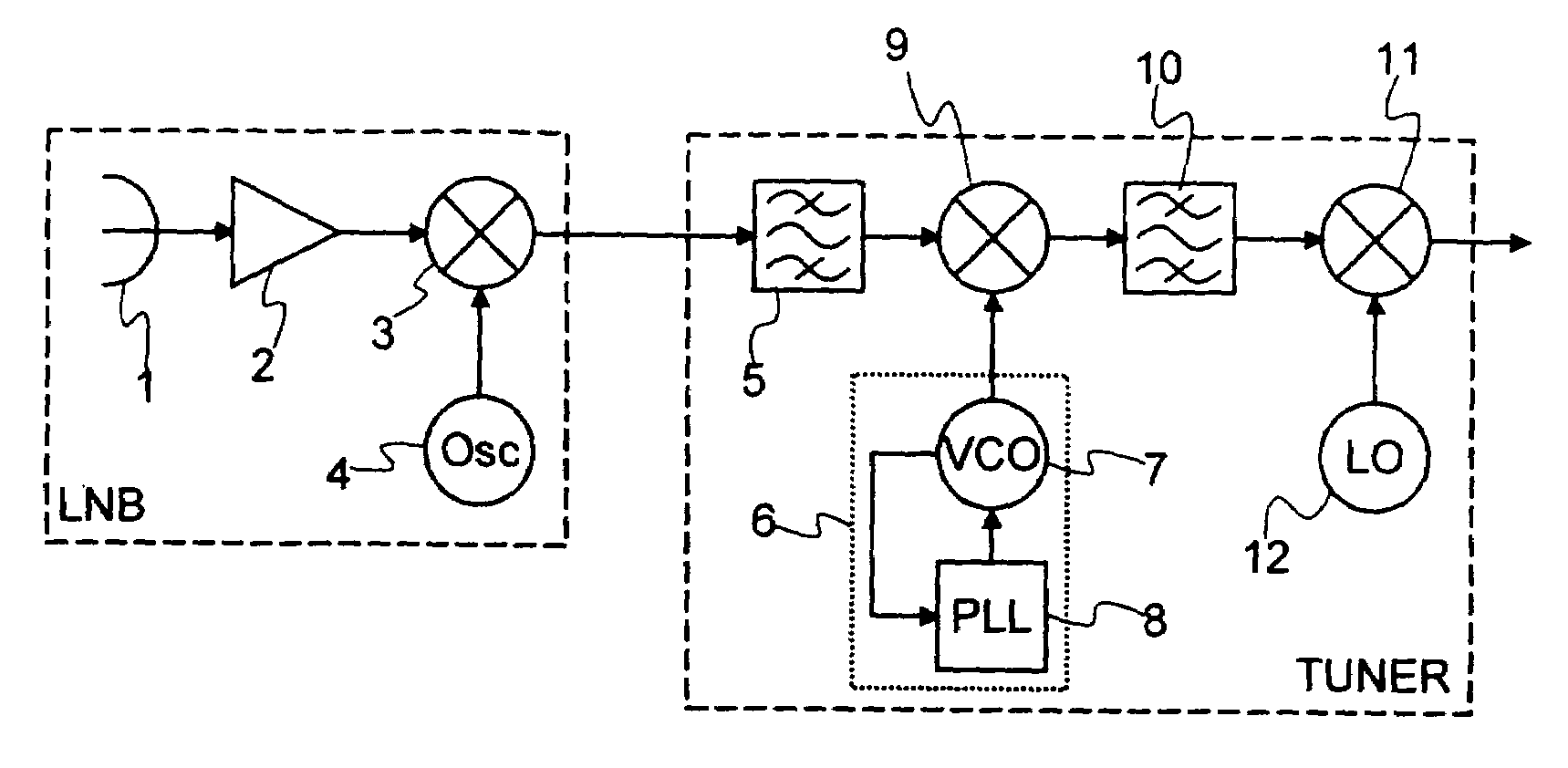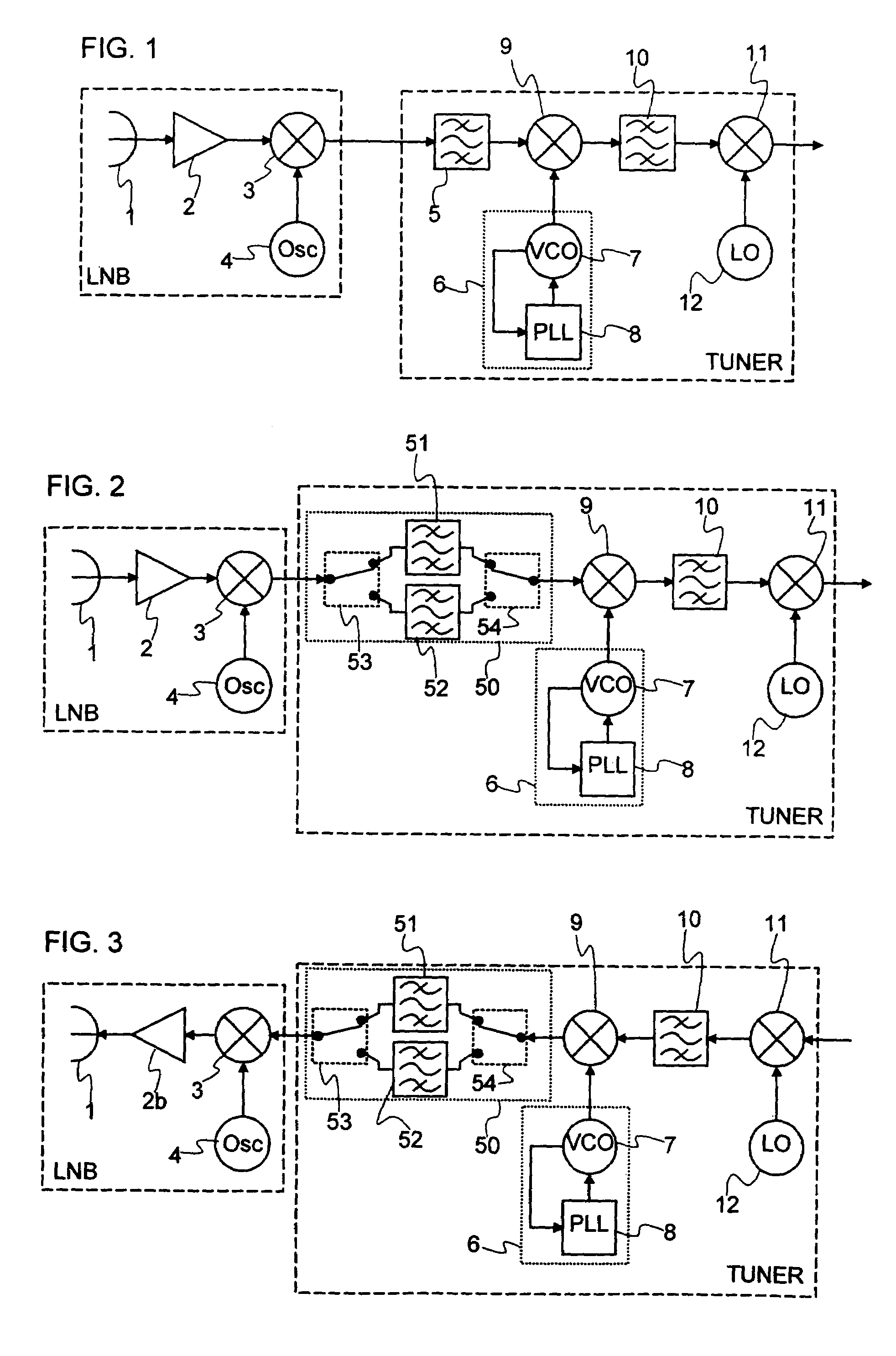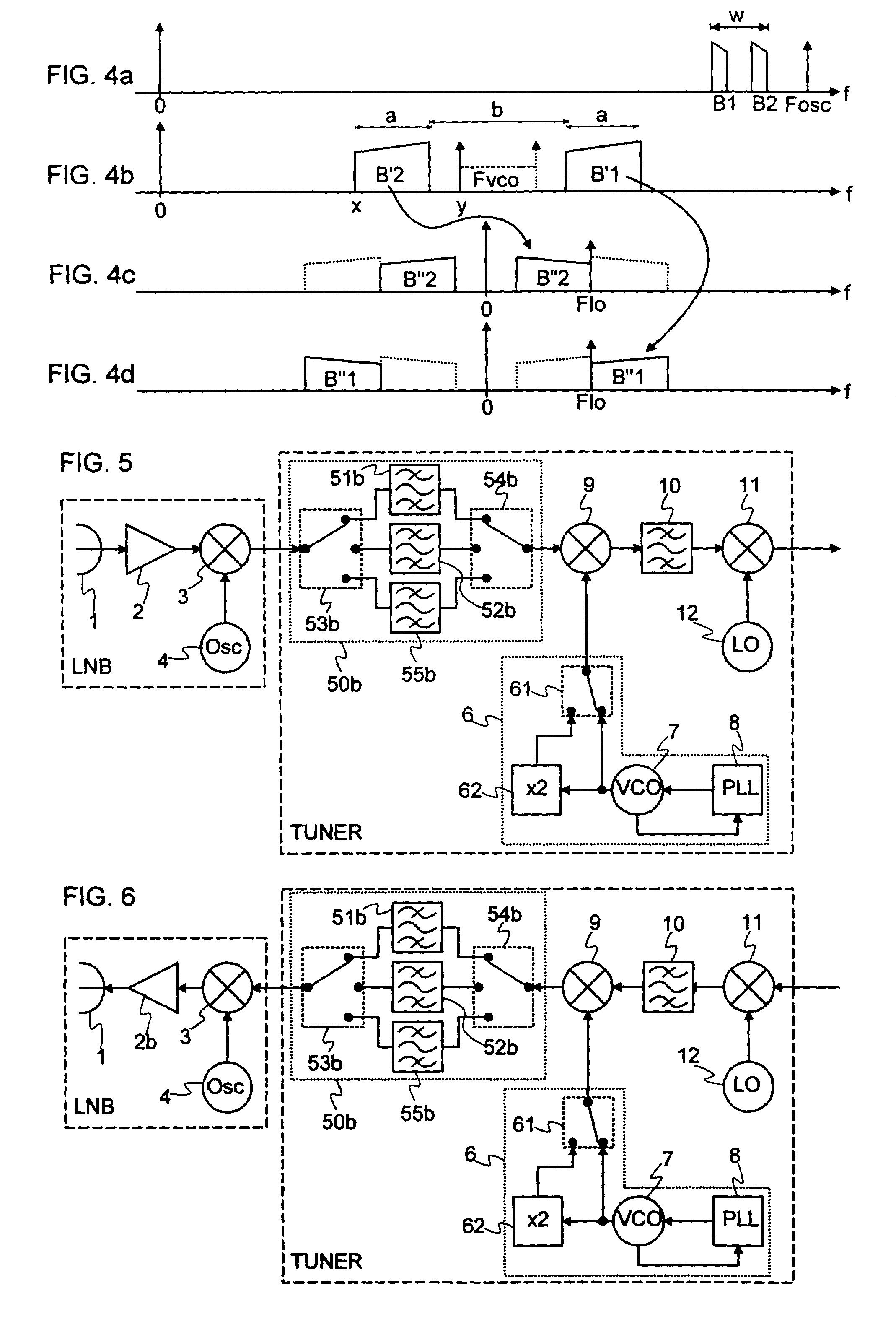Radiofrequency transmitter and/or receiver
a radiofrequency transmitter and receiver technology, applied in the field of satellite broadcasting devices, can solve the problems of difficult to produce such a synthesizer using current means, and inability to use a conventional device such as the one in fig. 1
- Summary
- Abstract
- Description
- Claims
- Application Information
AI Technical Summary
Benefits of technology
Problems solved by technology
Method used
Image
Examples
first embodiment
[0026]FIG. 2 shows a satellite receiver according to the invention. To make the operation of the receiver more clearly understood, reference should also be made to FIG. 4. This receiver operates within a high frequency range, for example the Ka band, and it has a bandwidth spread out over a spectral width w (FIG. 4a) with, for example, w equal to 1.9 GHz and lying between 18.3 and 20.2 GHz. The working part of the bandwidth is split into two sub-bands B1 and B2 (FIG. 4a) which have, for example, the same width, namely 500 MHz and are located between 18.3 and 18.8 GHz and between 19.7 and 20.2 GHz. The receiver comprises an LNB receiving block, mounted for example at the focus of a parabolic dish, and a TUNER internal unit.
[0027]The LNB block, of conventional structure, includes an antenna 1 followed by a low-noise amplifier 2. The signal delivered by the amplifier 2 is transposed to an intermediate frequency by means of a mixer 3 and an oscillator 4. The oscillator 4 delivers a sign...
second embodiment
[0044]An illustrative example of a transmitter according to the invention is shown in FIG. 6. This transmitter operates within the same frequency bands as the receiver of FIG. 5. The transmitter consists overall of the same components as the receiver, but is distinguished from the receiver by a reversal in the direction of the signal and the replacement of the amplifier 2 with a transmission amplifier 2b.
[0045]Many variants on the second embodiment are also possible, some of which are illustrated in FIG. 8. If the broader sub-band, for example B2, lies at a lower frequency than the narrower sub-band, for example B1, all that is required is to place the frequency of the oscillator 4 above the sub-band B1, as shown in FIG. 8a, in order to replace the narrower band on the lowest frequencies.
[0046]FIG. 8b illustrates a different distribution between the filters. The broadest part of the image of the broader sub-band is positioned at a lower frequency than the narrowest part. The circui...
PUM
 Login to View More
Login to View More Abstract
Description
Claims
Application Information
 Login to View More
Login to View More - R&D
- Intellectual Property
- Life Sciences
- Materials
- Tech Scout
- Unparalleled Data Quality
- Higher Quality Content
- 60% Fewer Hallucinations
Browse by: Latest US Patents, China's latest patents, Technical Efficacy Thesaurus, Application Domain, Technology Topic, Popular Technical Reports.
© 2025 PatSnap. All rights reserved.Legal|Privacy policy|Modern Slavery Act Transparency Statement|Sitemap|About US| Contact US: help@patsnap.com



